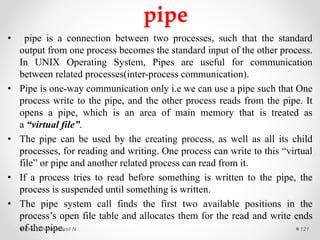This document provides an overview of operating systems presented by Prof. Anand N. Gharu. It discusses different types of operating systems including batch operating systems and multitasking operating systems. It also describes the key functions and services provided by operating systems, such as program execution, I/O operations, file system manipulation, memory management, and process management. The document contains detailed explanations of how operating systems handle various activities like loading and executing programs, allocating system resources, performing I/O, and providing protection between different processes and users.
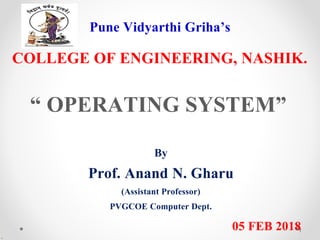








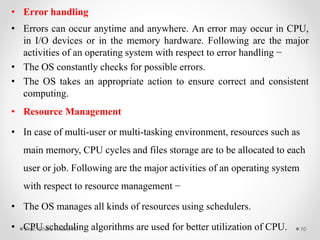
































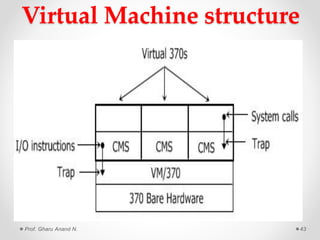






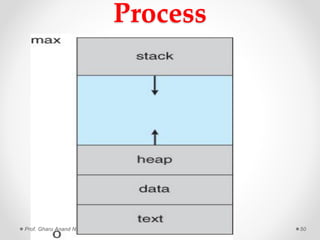
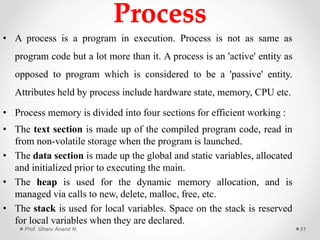















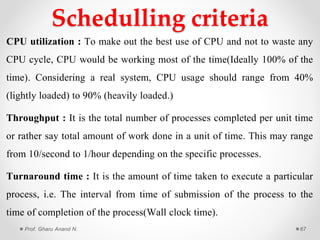


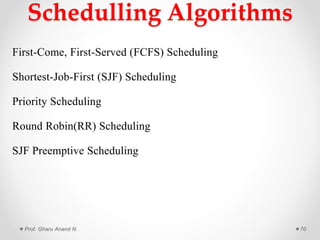


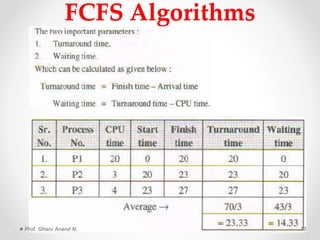










































![Deadlock AvoidanceLet us assume that there are n processes and m resource types. Some data structures
are used to implement the banker's algorithm. They are:
Available: It is an array of length m. It represents the number of available resources
of each type. If Available[j] = k, then there are k instances available, of resource
type Rj.
Max: It is an n x m matrix which represents the maximum number of instances of
each resource that a process can request. If Max[i][j] = k, then the process Pi can
request atmost k instances of resource type Rj.3
Allocation: It is an n x m matrix which represents the number of resources of each
type currently allocated to each process. If Allocation[i][j] = k, then process Pi is
currently allocated k instances of resource type Rj.
Need: It is an n x m matrix which indicates the remaining resource needs of each
process. If Need[i][j] = k, then process Pi may need k more instances of resource
type Rj to complete its task.
Need[i][j] = Max[i][j] - Allocation [i][j]Prof. Gharu Anand N. 116](https://image.slidesharecdn.com/finalchapter-6spos-2018-180223060422/85/OPERATING-SYSTEM-116-320.jpg)




